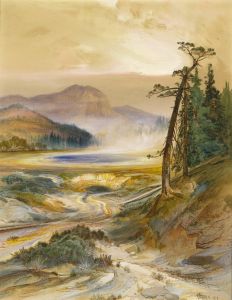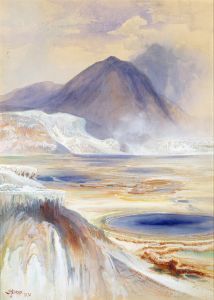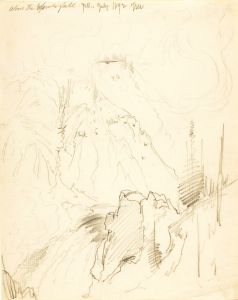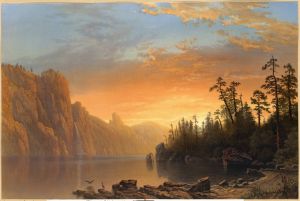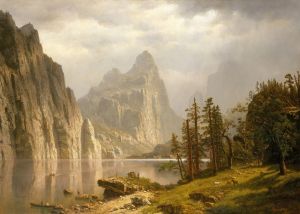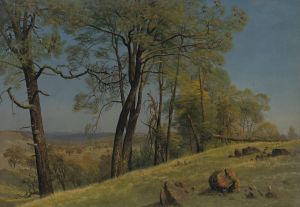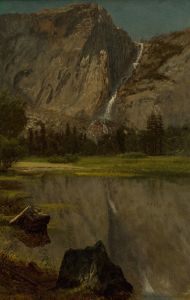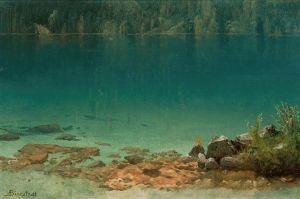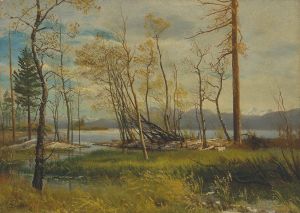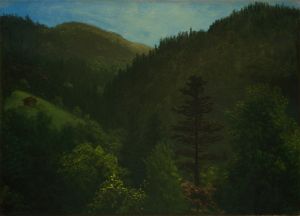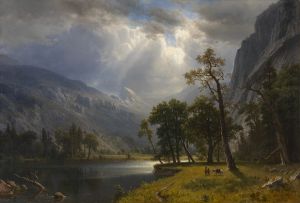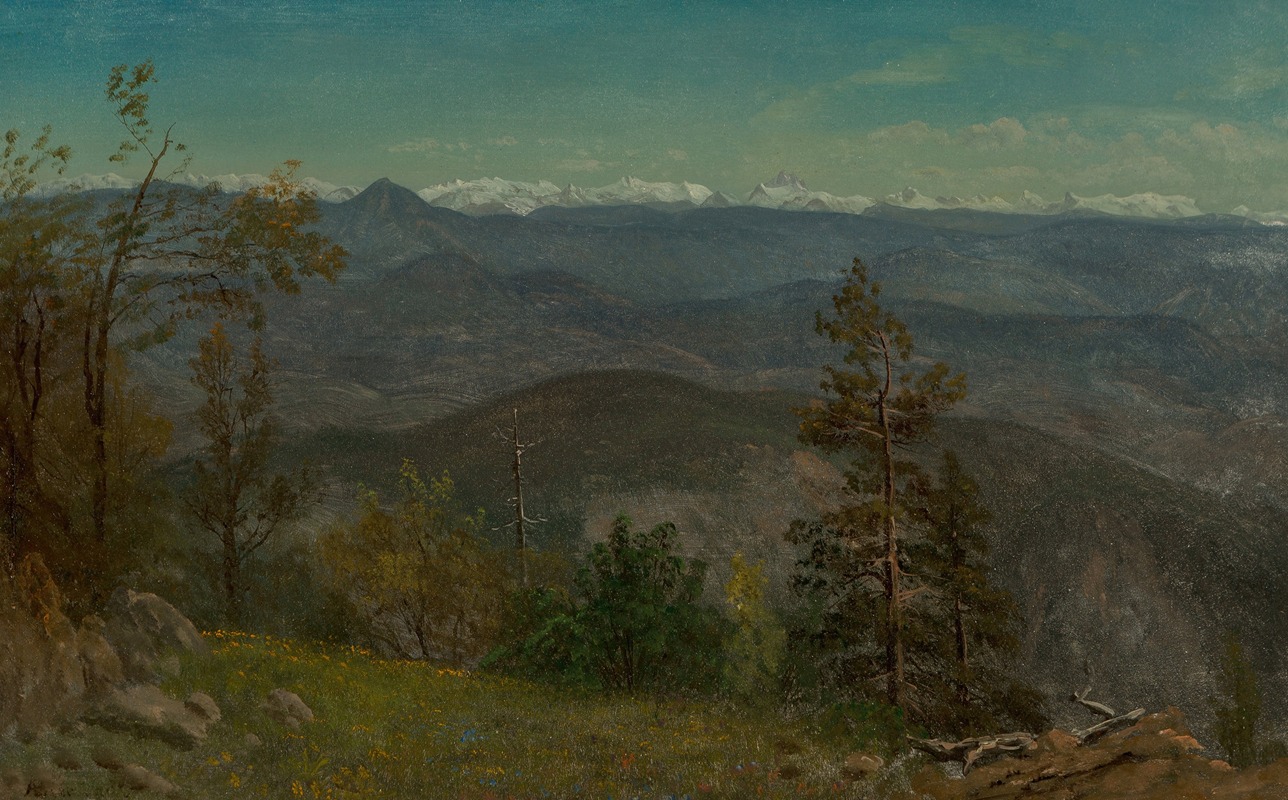
Yosemite Valley, California
A hand-painted replica of Albert Bierstadt’s masterpiece Yosemite Valley, California, meticulously crafted by professional artists to capture the true essence of the original. Each piece is created with museum-quality canvas and rare mineral pigments, carefully painted by experienced artists with delicate brushstrokes and rich, layered colors to perfectly recreate the texture of the original artwork. Unlike machine-printed reproductions, this hand-painted version brings the painting to life, infused with the artist’s emotions and skill in every stroke. Whether for personal collection or home decoration, it instantly elevates the artistic atmosphere of any space.
Albert Bierstadt's "Yosemite Valley, California" is a notable painting by the German-American artist renowned for his large landscapes of the American West. Bierstadt, born in 1830 in Solingen, Germany, immigrated to the United States with his family in 1833. He became a leading figure in the Hudson River School, a mid-19th century American art movement embodied by a group of landscape painters whose aesthetic vision was influenced by romanticism.
Bierstadt's work is characterized by its grand scale, dramatic use of light, and meticulous attention to detail. His paintings often depict the vastness and majesty of the American wilderness, capturing the awe-inspiring beauty of the landscapes he encountered. "Yosemite Valley, California" is a quintessential example of his style and thematic focus.
The painting was created during a period when Bierstadt was deeply inspired by his travels to the American West. In the 1860s, he joined several expeditions to the region, including trips to the Rocky Mountains and the Sierra Nevada. These journeys provided him with the firsthand experience and sketches that he would later use to create his large-scale studio paintings.
"Yosemite Valley, California" captures the breathtaking beauty of one of America's most iconic natural landscapes. Yosemite Valley, located in the Sierra Nevada mountains of California, is renowned for its stunning granite cliffs, waterfalls, and diverse ecosystems. Bierstadt's depiction of the valley is marked by its luminous quality and the artist's ability to convey the grandeur and tranquility of the scene.
The painting showcases Bierstadt's skill in rendering light and atmosphere. He often employed a technique known as "luminism," which emphasizes the effects of light on the landscape, creating a sense of depth and realism. In "Yosemite Valley, California," the interplay of light and shadow enhances the dramatic topography of the valley, highlighting features such as El Capitan and Half Dome.
Bierstadt's work played a significant role in shaping public perceptions of the American West during the 19th century. His paintings were exhibited widely and contributed to the growing interest in the region's natural beauty. They also played a part in the early conservation movement, as they helped to raise awareness about the importance of preserving these landscapes for future generations.
"Yosemite Valley, California" is one of many paintings by Bierstadt that helped to establish his reputation as one of the foremost landscape painters of his time. His works are celebrated for their ability to capture the sublime beauty of nature and for their contribution to the visual documentation of the American frontier.
Today, Bierstadt's paintings, including "Yosemite Valley, California," are held in high regard and can be found in major art museums and collections across the United States. They continue to inspire viewers with their majestic portrayal of the American wilderness and serve as a testament to Bierstadt's enduring legacy as a master of landscape painting.





